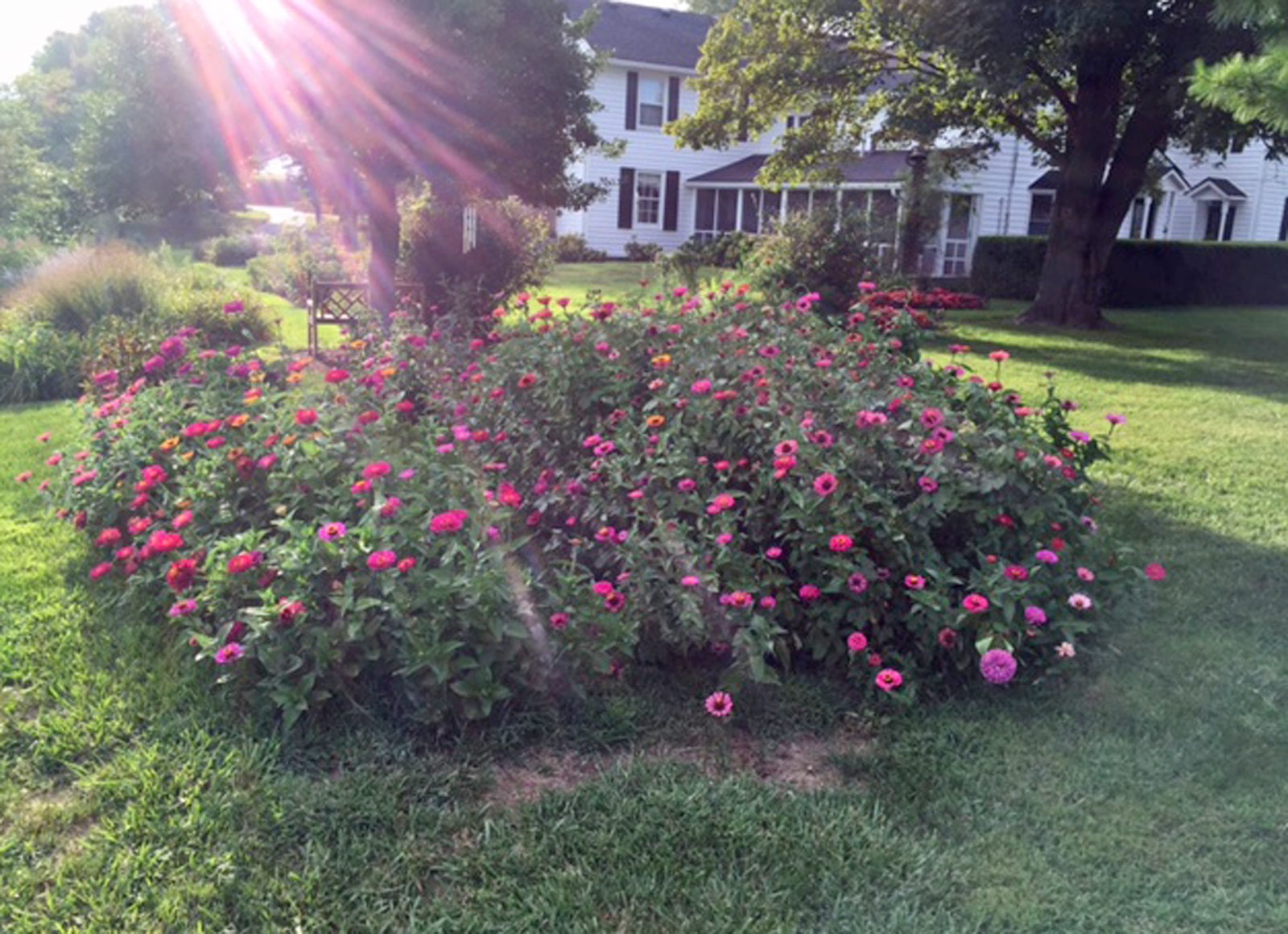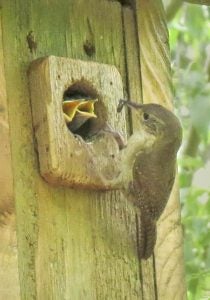The Dawn Chorus: Magical early morning hours, the best time to experience nature
Published 6:44 am Friday, June 15, 2018

- Photo by Alice Biggers Dawn in the garden is a magical time. Garden Club member Alice Biggers enjoys sitting on a bench in her large flower garden to welcome a new day. Gardening is more pleasant in the cooler early hours and that is the best time to water your plants.
By SUSAN JONAS
Garden Club of Danville
One morning last week, I woke up at 5:30 and couldn’t go back to sleep. Instead, I wrapped a light quilt around my shoulders and went out to the garden to watch the sunrise. It was one of those truly magical mornings, when the sky is streaked with pink, the air is fresh and clean after an overnight rainfall, and the garden almost purrs with pleasure. I sat for an hour, just watching the day begin and listening to the loud chorus of birds all around me. The tree canopy and shrubbery rang with trills, tweets, and simple melodies.
Robins were busily splashing in the birdbaths and making quick flights into the serviceberry tree for breakfast while blackbirds pecked in the grass. A family of squirrels played tag around the trunks of two hackberry trees, and a rabbit hopped slowly across the lawn. In the quiet before traffic sounds, ringing phones, and busy schedules distract us, a garden allows us to begin the day in peace. It needn’t be a fancy garden, either; just a chair under a tree will do.
During the summer, when temperatures often climb into the 80s by 10:00, these precious early hours are the best time to be outside. If you can drag yourself out of bed at dawn, garden chores are easier without hot sun and high humidity sapping your energy. It’s the best time to water, too.
The loudest birds in my garden early in the morning are the wrens in our three birdhouses. The singing comes from all directions as courting males establish their territories and threaten other males who might approach. It may sound like aggression to another wren, but it sounds like music to me.
A familiar backyard bird, the house wren was named for its tendency to nest around human homes and in birdhouses. Despite its drab colors, this perky bird is very appealing, with its short tail held up in the air, pausing frequently to sing a rich, bubbling song. They are inquisitive and active little birds, bouncing about and constantly investigating their surroundings, keen eyes catching every movement.
Wrens prefer yards with plenty of shrubbery and trees nearby. They forage actively in dense vegetation at various levels, sometimes high in trees, but usually low, searching for insects among foliage, on twigs and branches, in the bark of tree trunks, and on the ground. Using native plants attracts the insects that wrens eat, along with berries. Observers have counted wren parents making 1,000 trips in a single day to feed their young. That’s a lot of beetles, grasshoppers, crickets, caterpillars, moths, flies, and spiders that won’t be raiding your garden.

Photo by Betty Hall Photography
Wrens are cavity nesting birds but are famous for building nests in unlikely enclosed spaces. This one has chosen a bluebird house. Having plenty of shrubbery and trees, especially native plants, in your garden will provide the cover and insects that attract wrens. They, in turn, will serenade you all summer long.
Wrens are cavity nesting birds but are famous for building nests in unlikely enclosed spaces: mail boxes, flower pots, a hat hanging on the porch, door wreaths, cluttered garage shelves, and even parked cars with an open window. We had to leave the garage door open most of one summer because a wren nested in a box of old rags.
They’ll be even happier if you provide a birdhouse made just for wrens, with an entry hole about 1-1/8 inches in diameter. Any bigger and house sparrows or other less desirable birds will use them. The house should not have a perch that could be used by invading birds or predators. Hang it five to 10 feet above ground. Wrens seem to prefer houses hanging from trees. You may put it close to your house, porch, or deck, as they don’t seem to mind human activity nearby.
Most suburban back yards are large enough for at least two families of wrens. The size of a male’s territory is about half an acre. Two or three well spaced bird houses in that territory will be acceptable. The male begins several starter nests early in spring and the female chooses her favorite. Two broods are raised each summer, so don’t give up if no one occupies your house at first. To my surprise, I learned that the occupants of our birdhouses may be the same male with more than one wife, although how he manages to help feed all those babies is beyond me.
Birds and other wildlife actually prefer a neglected garden, with areas of thick underbrush. However, with the right native plantings in enough density, even a manicured garden will attract the animals that bring gardens to life. There are treasures, magic, and miracles in your own garden. You just have to take a moment to find them…or let them find you. Some early morning this summer, tiptoe outside and sit quietly while you let the day unfold around you.
The Garden Club of Danville does not meet in July. For information about the club’s activities, see thegardenclubofdanville.org.





